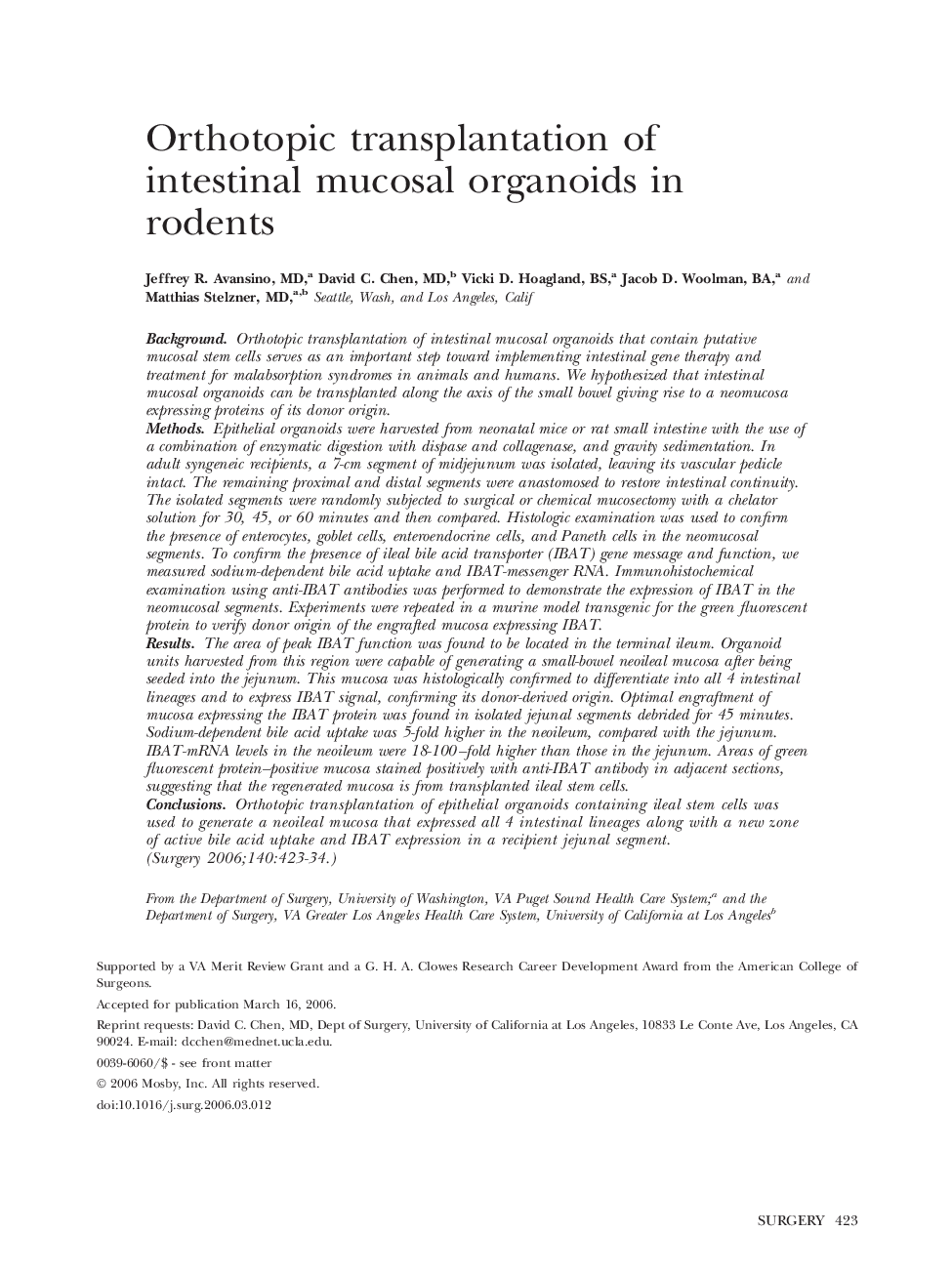| Article ID | Journal | Published Year | Pages | File Type |
|---|---|---|---|---|
| 4309833 | Surgery | 2006 | 12 Pages |
BackgroundOrthotopic transplantation of intestinal mucosal organoids that contain putative mucosal stem cells serves as an important step toward implementing intestinal gene therapy and treatment for malabsorption syndromes in animals and humans. We hypothesized that intestinal mucosal organoids can be transplanted along the axis of the small bowel giving rise to a neomucosa expressing proteins of its donor origin.MethodsEpithelial organoids were harvested from neonatal mice or rat small intestine with the use of a combination of enzymatic digestion with dispase and collagenase, and gravity sedimentation. In adult syngeneic recipients, a 7-cm segment of midjejunum was isolated, leaving its vascular pedicle intact. The remaining proximal and distal segments were anastomosed to restore intestinal continuity. The isolated segments were randomly subjected to surgical or chemical mucosectomy with a chelator solution for 30, 45, or 60 minutes and then compared. Histologic examination was used to confirm the presence of enterocytes, goblet cells, enteroendocrine cells, and Paneth cells in the neomucosal segments. To confirm the presence of ileal bile acid transporter (IBAT) gene message and function, we measured sodium-dependent bile acid uptake and IBAT-messenger RNA. Immunohistochemical examination using anti-IBAT antibodies was performed to demonstrate the expression of IBAT in the neomucosal segments. Experiments were repeated in a murine model transgenic for the green fluorescent protein to verify donor origin of the engrafted mucosa expressing IBAT.ResultsThe area of peak IBAT function was found to be located in the terminal ileum. Organoid units harvested from this region were capable of generating a small-bowel neoileal mucosa after being seeded into the jejunum. This mucosa was histologically confirmed to differentiate into all 4 intestinal lineages and to express IBAT signal, confirming its donor-derived origin. Optimal engraftment of mucosa expressing the IBAT protein was found in isolated jejunal segments debrided for 45 minutes. Sodium-dependent bile acid uptake was 5-fold higher in the neoileum, compared with the jejunum. IBAT-mRNA levels in the neoileum were 18-100–fold higher than those in the jejunum. Areas of green fluorescent protein–positive mucosa stained positively with anti-IBAT antibody in adjacent sections, suggesting that the regenerated mucosa is from transplanted ileal stem cells.ConclusionsOrthotopic transplantation of epithelial organoids containing ileal stem cells was used to generate a neoileal mucosa that expressed all 4 intestinal lineages along with a new zone of active bile acid uptake and IBAT expression in a recipient jejunal segment.
